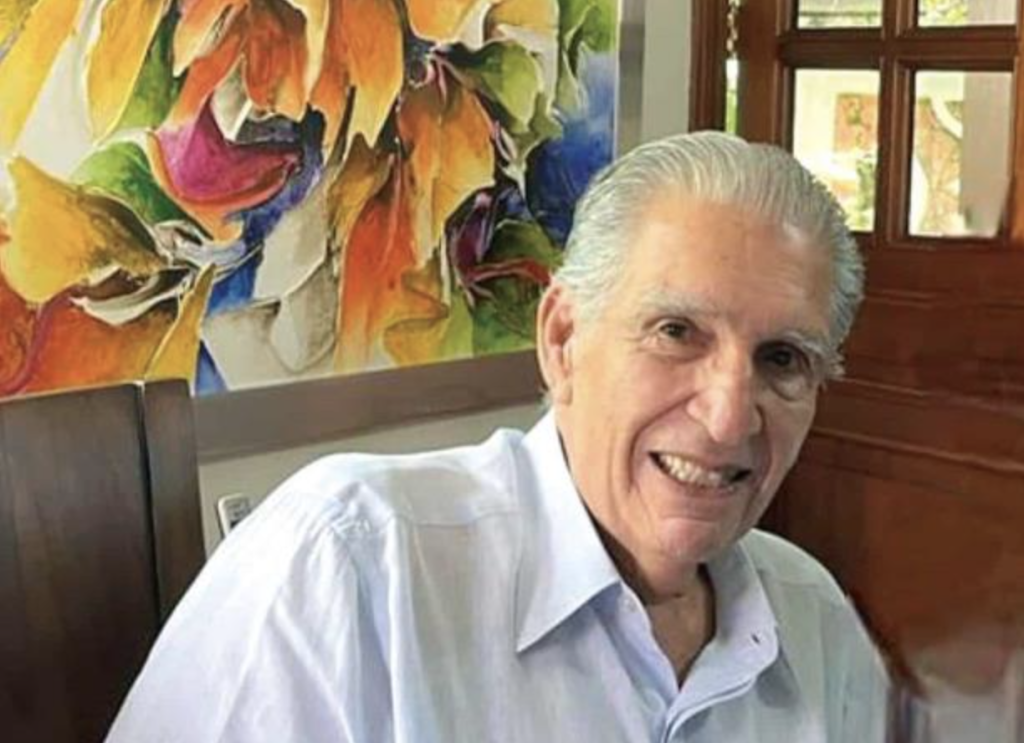
The late President Antonio Guzman chose Victor Cabral Amiama to be the country’s first Secretary of Tourism (1978-1981). Previously, tourism had a low participation in the economy, in a land where sugar and cacao exports prevailed. Cabral is credited with the firm start of major tourism development in the country.
Cabral has served as the president of Casa de Campo, the pioneer of tourism in the country, and internationally as president of Sheraton Latin America. In Mexico he also served as adjunct director of the Fondo Nacional de Fomento al Turismo (Fonatur).
Cabral today lives in Mexico. Diario Libre interviewed him when he visited and picked his brains as to where tourism in the DR is headed and what should be improved.
When asked about the DR’s positioning in Caribbean tourism, Cabral remarked that the DR isn’t just competing in the Caribbean tourism market; it’s leading the charge. He cited the country’s diverse landscapes, the warmth of its people, and a modernizing industry, and spoke with pride on how the country consistently has attracted more visitors than destinations with longer histories.
However, he stresses this leadership position requires constant cultivation. “That leadership has to be worked on every day. It cannot be taken for granted,” he said. He said investment, personnel training, and meticulous attention to the country’s international image require constant attention. He mentioned the continued updating and adherence to the Tourism Master Plan as of utmost importance.
When questioned about the state’s focus—whether on established destinations or large-scale emerging areas—he observed: “I believe things must be done in order.” He discourages neglecting existing infrastructure and ongoing projects. He remarked that before fully committing to long-term ventures like Pedernales in the Southwest or Punta Bergantín on the North Coast, it would be more prudent to reinforce successful areas such as Bávaro-Punta Cana on the East Coast and solidify destinations with a strong foundation, like Samaná, on the Northeast Coast.
He said Samaná, in particular, holds the potential to become a pivotal tourism hub in the North. He called for the completion of a tourism corridor stretching from northwestern Montecristi to eastern Miches, with Samaná at its center, and remarked this could foster more balanced development across the country. “The priority should be to finish what has been started, execute it well, and then embark on other projects with a long-term vision,” he told Diario Libre.
Addressing the factors hindering more robust growth in Dominican tourism, he identified several key areas. He spoke of how environmental preservation is paramount and issued a warning against growth at the expense of natural resources. He said that orderly territorial planning in tourist zones is necessary to prevent urban sprawl and ensure adherence to an updated Master Plan. Enhanced personnel training at all levels is also crucial, alongside diversification beyond the traditional sun and beach model. The Dominican Republic possesses significant potential in cultural, health, nature, and convention tourism, he pointed out.
Regarding potential risks to the tourism sector, he cited complacency as a major danger. External threats such as climate change, pandemics, and regional instability also pose concerns. Internally, issues like corruption, prostitution, improvisation, and real estate pressure on fragile zones are worrying trends. The key to safeguarding tourism lies in planning, law enforcement, and a state policy that transcends individual administrations.
Reflecting on the journey of Dominican tourism, Cabral expressed pride in being part of its institutional beginnings. While significant progress has been made, the dynamic nature of the tourism industry demands constant vigilance. A core lesson learned in the early years remains relevant: “Well-managed tourism not only brings in foreign currency. It also transforms communities, creates decent jobs and projects the best image of the country,” he highlighted.
He reaffirmed the importance of developing tourism in an organized manner to showcase the nation’s best qualities.
Read more in Spanish:
Diario Libre
20 May 2025

